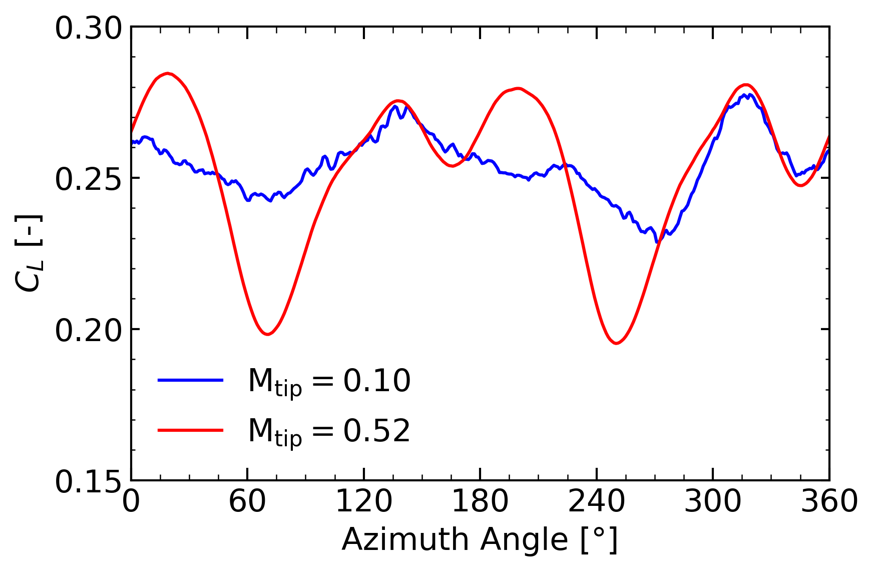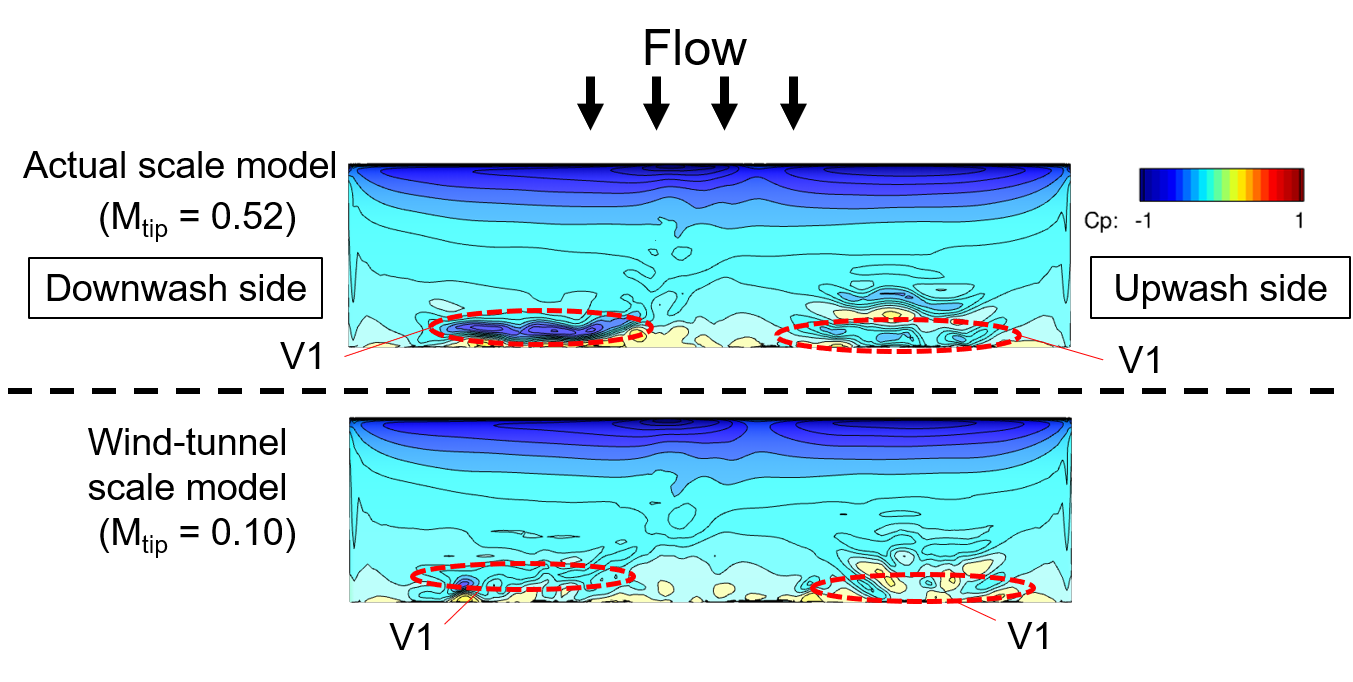Numerical Study on Effects of Propeller to Fixed Wing at Low Reynolds Number
JAXA Supercomputer System Annual Report February 2021-January 2022
Report Number: R21EACA43
Subject Category: JSS Inter-University Research
- Responsible Representative: Keiichi Kitamura, Associate professor, Yokohama National University
- Contact Information: Yoshikatsu Furusawa(furusawa-yoshikatsu-vz@ynu.jp)
- Members: Yoshikatsu Furusawa, Keiichi Kitamura
Abstract
As a new form of a Mars exploration vehicle, research and development of a Mars airplane are progressing. Since the Martian atmosphere is low density and the Mars airplane flies in the low Reynolds number region, the flow field around the Mars airplane differs from airplanes flying in the Earth atmosphere. Besides, the Mars airplane employs propeller-driven, and it is known that propeller slipstream interacts with the fixed-wing and improves aerodynamic performances. However, the detail of the interaction mechanism has not been clarified. In the present study, we conduct numerical simulations and intend to clarify the unsteady effects of propeller slipstream to the fixed-wing at the low Reynolds number region.
Reference URL
N/A
Reasons and benefits of using JAXA Supercomputer System
We used JSS3 to perform large-scale three-dimensional numerical simulations using the flow analysis solver "rFlow3D" and "FaSTAR" developed by JAXA. JSS2 can perform fast and multiple calculations.
Achievements of the Year
In this work, unsteady numerical calculations simulating the wind tunnel experiments conducted at Tohoku University were carried out. Comparing flow around the wind-tunnel scale model (incompressible flow) and the actual scale model (compressible flow around the propeller), we investigated compressible effects around the propeller on the aerodynamics characteristics of the fixed wing within the propeller slipstream during the actual flight on Mars. The Propeller advance ratio and the Reynolds number on both scales are the same value, J = 0.8 and Re = 30,000. The propeller rotation number is n =4,500, and the angle of attack was set to 4 deg. In this case, the blade tip Mach numbers are Mtip = 0.10 on the wind-tunnel scale model and Mtip = 0.52 on the actual scale model.
Figure 1 shows the time history of the lift coefficient of the fixed wing within the propeller slipstream during one propeller rotation. In this figure, compared to the lift coefficient of the wind-tunnel scale model (blue line), the lift coefficient of the actual scale model (red line) fluctuates remarkably.
Figure 2 describes the surface pressure coefficient contours on the upper side of the fixed wing at a propeller azimuth angle 15 deg. The area indicated as V1 is the location of the strong vortex, which is formed by the interference between the propeller slipstream vortices and the separation shear layer over the fixed wing. The surface pressure around V1 on the actual scale model is lower than that on the wind-tunnel scale model, indicating that large CL fluctuation on the actual scale is caused by the periodic flow of the strong vortex.
Publications
- Oral Presentations
Furusawa, Y., Kitamura, K., Nagai, H., "Numerical Study on Blade-tip Mach Number Effect on Propeller-Wing Aerodynamic Interference," JSASS-2021-5013, 2021.
- Poster Presentations
Furusawa, Y., Kitamura, K., Nagai, H., "Numerical Study on Mach Number Effects of Propeller on Propeller-Wing Interaction," 18th International Conference on Flow Dynamics, 2021.
Usage of JSS
Computational Information
- Process Parallelization Methods: MPI
- Thread Parallelization Methods: OpenMP
- Number of Processes: 36 - 1440
- Elapsed Time per Case: 480 Hour(s)
JSS3 Resources Used
Fraction of Usage in Total Resources*1(%): 0.17
Details
Please refer to System Configuration of JSS3 for the system configuration and major specifications of JSS3.
| System Name | CPU Resources Used(Core x Hours) | Fraction of Usage*2(%) |
|---|---|---|
| TOKI-SORA | 901181.59 | 0.04 |
| TOKI-ST | 792057.55 | 0.98 |
| TOKI-GP | 0.00 | 0.00 |
| TOKI-XM | 0.00 | 0.00 |
| TOKI-LM | 11973.40 | 0.89 |
| TOKI-TST | 0.00 | 0.00 |
| TOKI-TGP | 0.00 | 0.00 |
| TOKI-TLM | 0.00 | 0.00 |
| File System Name | Storage Assigned(GiB) | Fraction of Usage*2(%) |
|---|---|---|
| /home | 7.00 | 0.01 |
| /data and /data2 | 15380.00 | 0.16 |
| /ssd | 2580.00 | 0.67 |
| Archiver Name | Storage Used(TiB) | Fraction of Usage*2(%) |
|---|---|---|
| J-SPACE | 4.98 | 0.03 |
*1: Fraction of Usage in Total Resources: Weighted average of three resource types (Computing, File System, and Archiver).
*2: Fraction of Usage:Percentage of usage relative to each resource used in one year.
ISV Software Licenses Used
| ISV Software Licenses Used(Hours) | Fraction of Usage*2(%) | |
|---|---|---|
| ISV Software Licenses(Total) | 2751.50 | 1.93 |
*2: Fraction of Usage:Percentage of usage relative to each resource used in one year.
JAXA Supercomputer System Annual Report February 2021-January 2022




